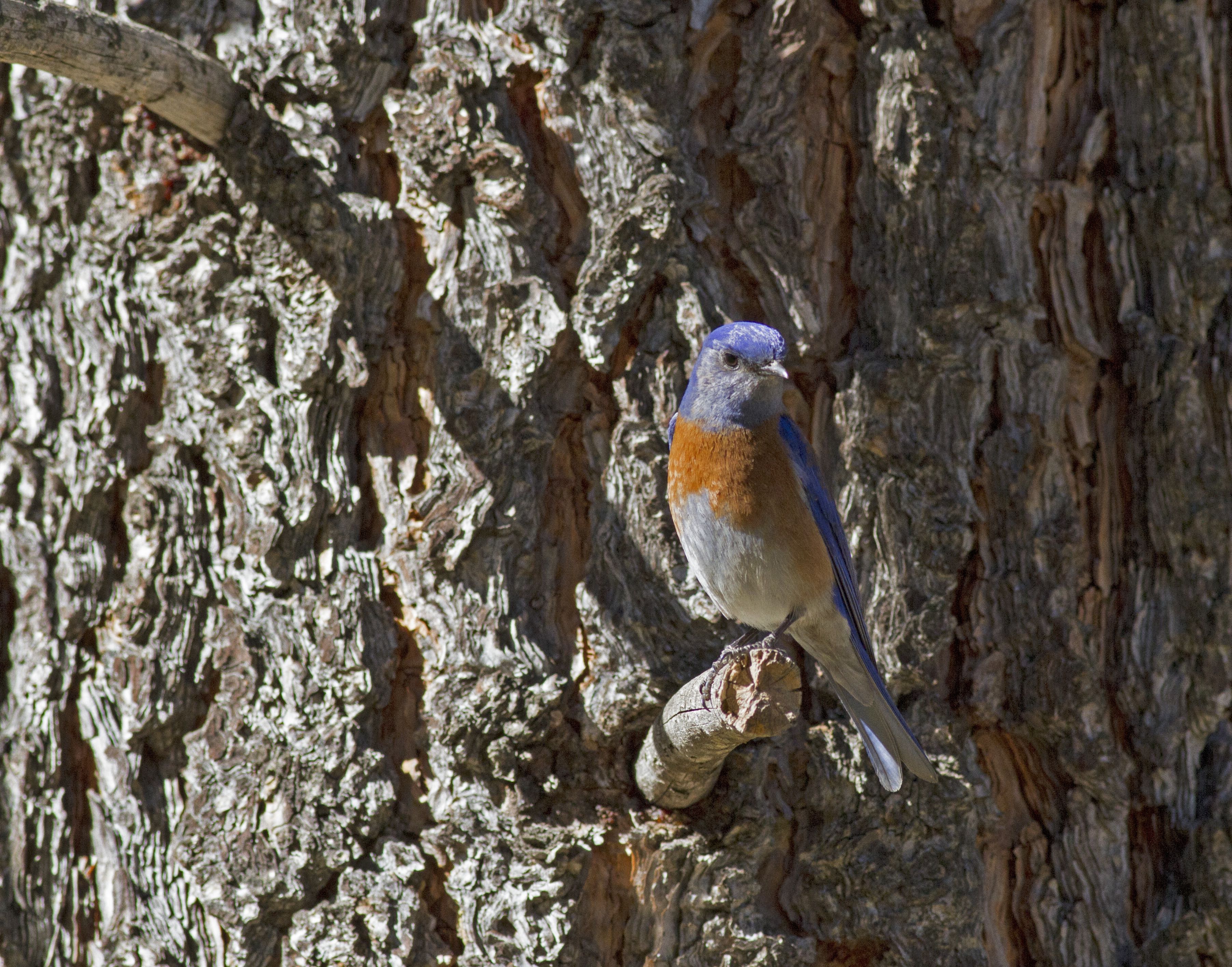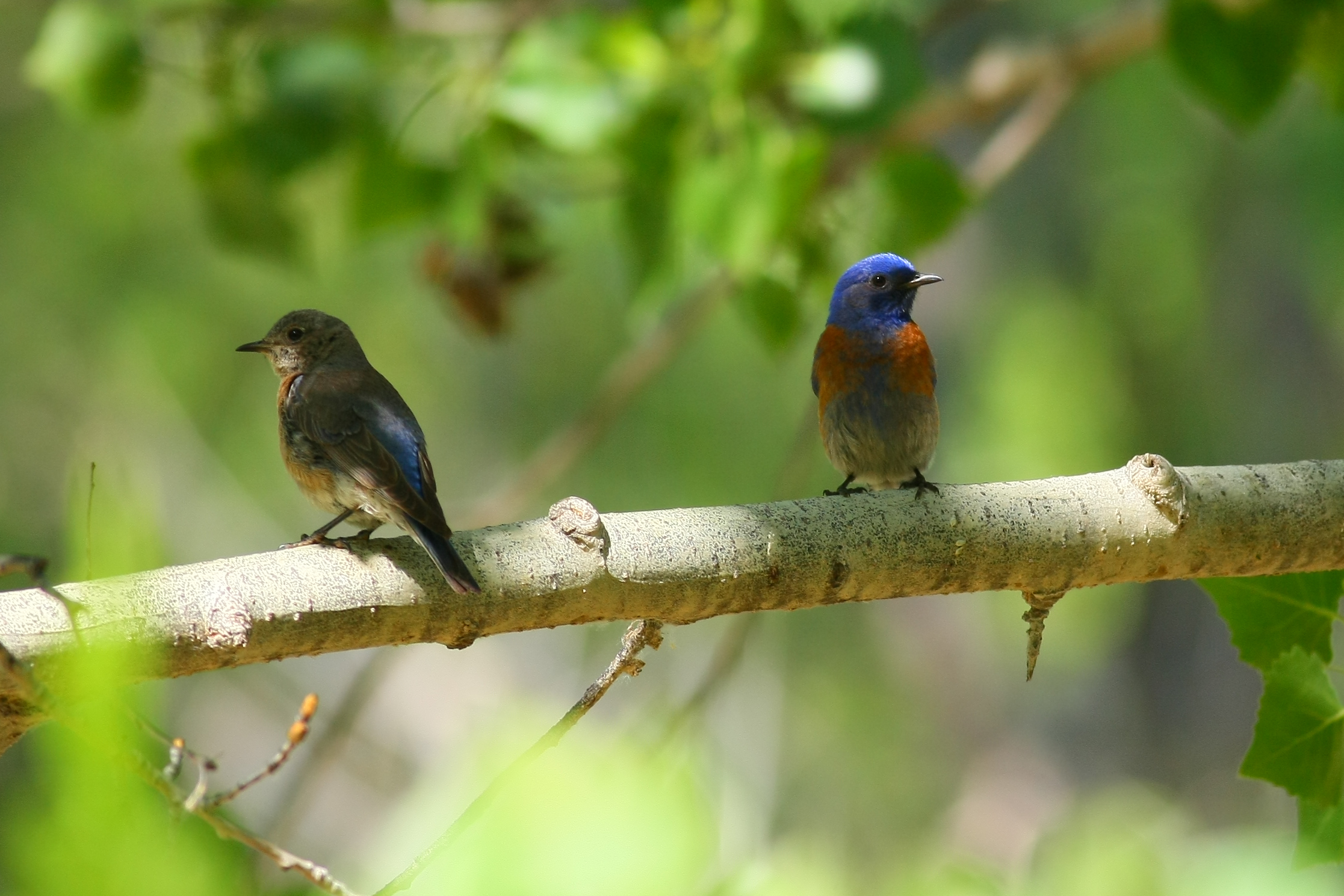
Western Bluebird
Sialia mexicana
Sialia mexicana
Cuyamaca Rancho State Park
Photo Credit: PJ Falatek

Western Bluebird
Sialia mexicana
Sialia mexicana
Photo Credit: Alexandra Houston
| Historically present | |
| Between 2000 and | |
| Last 10 years |
| File name | Lead Author | Year | Type |
|---|---|---|---|
| Biological Diversity Baseline Report FOR THE Lawrence and Barbara Daley Preserve County of San Diego | 2011 | report |
Fairly common to common year-round throughout much of California, excluding the higher mountains and eastern deserts [1].Utilizes open woodlands of oaks, riparian deciduous trees, or conifers with herbaceous understory when breeding. Optimal habitats include sparse to open-canopied, mature, valley foothill and montane hardwood and valley foothill hardwood-conifer. Leaves higher portions of nesting range in winter and becomes more widespread in lowlands [2].
Fairly common year-round. Found in all MUs within the MSPA [3].
Not listed [4].
Requires trees and shrubs for cover [5]. Typically rests in trees, fences, and shrubs when not foraging. Uncommon in habitats without at least a few trees or large shrubs, even in winter. Utilizes tree or snag cavities when nesting or roosting [5].
Three of the six subspecies exist in North America. Eastern bairdi (breeds in western to central Utah and southern Arizona) is larger with more extensive chestnut on upperparts than western occidentalis. Sialia mexicana jacoti of southeastern New Mexico and the trans-Pecos region of Texas is smallish, with extensive dark chestnut on upperparts [6].
Yearlong, diurnal activity. A resident in much of its California range, but undergoes local and irregular movements in many areas. In the Sierra Nevada region small flocks move during late summer and fall [7]. Relocates from higher mountains in winter, and may move into lowland areas not occupied while breeding.
Locally breeds east of the Sierra Nevada crest, south to Lake Tahoe Basin, and in Owens Valley, Inyo County from April into July. Rare in eastern deserts of southern California, but breeds in small numbers from Panamint Mts. to Clark Mt., and winters fairly commonly in the Colorado River Valley [8]. Clutch size 3-8, average 5. Frequently double-brooded. Incubation lasts 13-14 days. Altricial young tended by both parents. Males may tend fledglings while female renests [5].
Western bluebirds are primarily insectivorous ground gleaners and often forage off of perches [9]. Grasshoppers and beetles may be the most important portion of the nestling bluebird diet [10].
Declines in western bluebird populations are primarily due to habitat degradation from extensive logging, natural-fire suppression, grazing, industrialization, and urbanization [10]. In California, conversion of mistletoe-laden oak savannah to vineyards disrupts winter food supply and may reduce winter survival rates [11].
[1] Grinnell, J., and A. H. Miller. 1944. The distribution of the birds of California. Pac. Coast Avifauna No. 27. 608pp..
[2] Garrett, K., and J. Dunn. 1981. Birds of southern California. Los Angeles Audubon Soc. 408pp.
[3] Unitt, P. 1984. The birds of San Diego County. San Diego Soc. Nat. Hist. Mem. 13:435-437.
[4] California Department of Fish and Wildlife, Natural Diversity Database. July 2017. Special Animals List. Periodic publication. 51 pp.
[5] Zeiner, D.C., W.F.Laudenslayer, Jr., K.E. Mayer, and M. White, eds. 1988-1990. California's Wildlife. Vol. I-III. California Depart. of Fish and Game, Sacramento, California.
[6] Retrieved [December 26, 2017 ], from the Integrated Taxonomic Information System (ITIS) (http://www.itis.gov).
[7] Gaines, D. 1977b. Birds of the Yosemite Sierra. California Syllabus, Oakland. 153pp. in Zeiner, D.C., W.F.Laudenslayer, Jr., K.E. Mayer, and M. White, eds. 1988-1990. California's Wildlife. Vol. I-III. California Depart. of Fish and Game, Sacramento, California.
[8] Harrison, C. 1978. A field guide to the nests, eggs and nestlings of north American birds. W. Collins Sons and Co., Cleveland, OH. 416pp
[9] DeGraaf, Richard M.; Tilghman, Nancy G.; Anderson, Stanley H. 1985. Foraging guilds of North American birds. Environmental Management. 9(6): 493-536.
[10] Herlugson, C. J. 1980. Biology of sympatric populations of Western and Mountain bluebirds. Phd Thesis, Washington State Univ., Pullman. Retrieved [January8, 2018], from Guinan, Judith A., Patricia A. Gowaty and Elsie K. Eltzroth. 2008. Western Bluebird (Sialia mexicana), version 2.0. In The Birds of North America (P. G. Rodewald, editor). Cornell Lab of Ornithology, Ithaca, New York, USA
[11] Dickinson, J. L. and A. McGowan. 2005. Winter resource wealth drive's delayed dispersal and family-group living in western bluebirds. Proceedings of the Royal Society B-Biological Sciences no. 272 (1579):2423-2428.